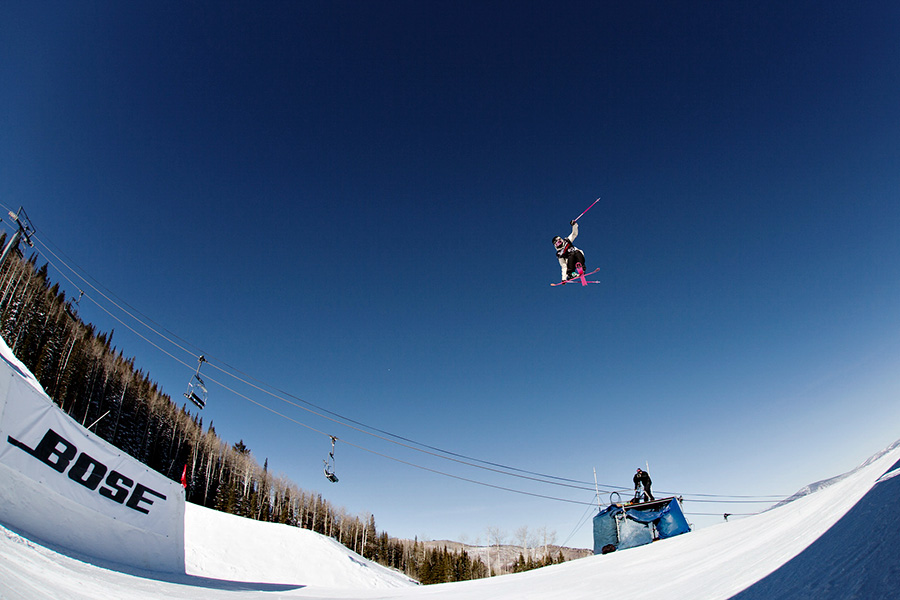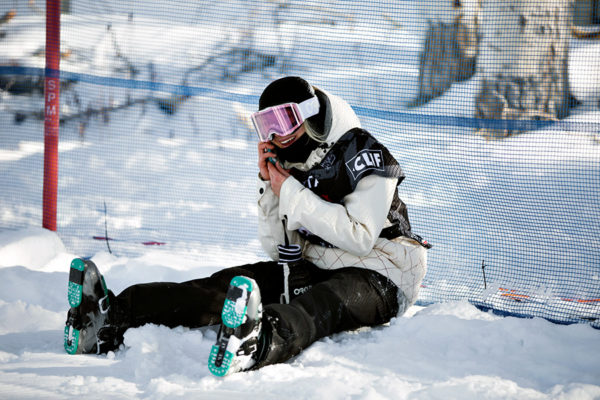Guide to 2018 Winter Olympics
How to watch, what to watch for and when Whitefish's Maggie Voisin will be going for the gold
By Andy Viano
The organizers are ready, the athletes are ready and the small, frigid mountain town of Pyeongchang, South Korea is ready for the 2018 Winter Olympics, the quadrennial celebration of the greatest skiers, skaters, sliders and more that the world has to offer.
The question, though, is if you feel ready. And if not — if, say, the torrent of ads during Super Bowl LII were your “oh yeah” realization that the Olympics are actually starting this week — we have you covered. Whether you’re just interested in cheering on hometown hero Maggie Voisin as she achieves her Olympic dream or you’re in it for one last (probably) chance to see Shaun White, Lindsey Vonn and Ted Ligety on the world’s largest stage, we hope this Olympic preview is a helpful place to start.
So, as they’ll be saying loudly on Feb. 9, let the Games begin!
THE BASICS
Wait, what day is it?
Yes, South Korea is just a few (thousand) miles away from Northwest Montana, and what’s today here is tomorrow there, what’s day is night, what’s night is day, and so on.
Pyeongchang is 16 hours ahead of Mountain Time, so when Maggie Voisin is dazzling the locals on Saturday, Feb. 17, we’ll be watching from the comforts of our homes on the night of Friday, Feb. 16. Confusing, sure, but the Games’ official website, www.pyeongchang2018.com, offers an easy-to-read grid schedule with events listed by both start time (in South Korea) and “my time.”
Where Is Everybody?
Pyeongchang — not to be confused with Pyongyang, the capital of North Korea — sits at an elevation of about 2,300 feet in the northeastern part of the country, about two hours east of South Korea’s capital, Seoul. The city itself has a population under 50,000, but what it lacks in size it more than makes up for in cold. Unlike recent Winter Olympics in more temperate climes like Sochi, Russia and Vancouver, British Columbia, that led to complaints about unseasonable warmth, Pyeongchang figures to feature low temperatures in the teens and gusty winds, which could make the Feb. 9 Opening Ceremony, held in an open-air stadium, a fascinating parade of parkas, blankets and hand-warmers.
How To Watch
NBC, the Olympics’ longtime broadcast partner in the United States, will have coverage day and night from Pyeongchang across a number of its networks and streaming services.
Coverage on traditional cable networks begins Thursday, Feb. 8, and both live and tape-delayed events can be seen on NBC, NBC Sports Network, USA Network, CNBC and the aptly named Olympic Channel. For cord-cutters, or if you’re away from your television, streaming broadcasts are available at www.nbcolympics.com or via the NBC Sports app, which will also have on-demand broadcasts of completed events in case you need to get caught up.
Americans to Watch
The Winter Olympics don’t feature as many household names as their summer counterparts, but there are still sure to be stars born in Pyeongchang. Here are some Americans — not including Whitefish’s Maggie Voisin — to keep an eye on, and a suggested time to catch them live in action.
Lowell Bailey, biathlon — No American has ever medaled in biathlon, an event that combines cross-country skiing and rifle shooting. Bailey, 36, was in position for a medal in 2014 before missing a target late in the competition, eventually finishing eighth. When to watch: Feb. 15, 4 a.m.
Jessie Diggins, cross-country skiing — No American has medaled in cross-country skiing since Bill Koch in 1976, but Diggins, 26, has won four world championship medals in her career and has a great shot to end that drought. When to watch: Feb. 14, 11:30 p.m.
Erin Hamlin, luge — A four-time Olympian and the 2014 bronze medalist, Hamlin is likely competing in her final Olympics. The 31-year-old is aiming to turn bronze into gold this time around and is coming off a silver medal at the 2017 World Championships. When to watch: Feb. 13, 3:30 a.m.
Ted Ligety, alpine skiing — The 33-year-old Utah native is one of the most decorated American skiers of all time and is back from an injury-plagued few years to try to defend his 2014 gold medal in the giant slalom. Ligety also won gold in Turino, Italy in 2006. When to watch: Feb. 17, 9:45 p.m.
Mikaela Shiffrin, alpine skiing — America’s newest skiing superstar, the 22-year-old Shiffrin is already an Olympic gold medalist (2014, slalom) and expectations will be sky-high this year for the reigning World Cup winner, who could medal in three different events. When to watch: Feb. 13, 9:45 p.m.
Lindsey Vonn, alpine skiing — If Shiffrin is America’s new star, she’s taking the mantle from Vonn, who will likely be making her final Olympic runs in Pyeongchang. At age 33, the four-time Olympian and two-time medalist isn’t just taking a victory lap — she won her most recent World Cup downhill race earlier this month. When to watch: Feb. 20, 7 p.m.
Shaun White, snowboard — Want to feel old? The ginger-haired snowboarding wunderkind is 33 years old and returns for a fourth Olympic Games. He won back-to-back gold medals in 2006 and 2010 and still ranks as one of the world’s best in the halfpipe. When to watch: Feb. 13, 7:30 p.m.
What’s Going on With Russia?
It might sound a little weird when a hockey team from something called “Olympic Athlete from Russia” takes the ice, but that’s exactly what’s going to happen in Pyeongchang.
Russia’s Olympic Team was banned from the Olympics in 2017, the result of a massive, years-long, illegal doping scandal and subsequent investigation, and for a while it looked like Russia would boycott the Olympics entirely. Instead, Russian athletes will be competing under the banner of Olympic Athlete from Russia, and no Russian team will be listed among the medal count leaders.
Several individual Russian athletes were banned for their roles as well, but exactly who will be competing was still being litigated as of this week. The Court of Arbitration for Sport had earlier reinstated 28 of those banned Russian athletes, but on Feb. 5 the International Olympic Committee rejected 15 of those reinstatements.
Whoever ends up competing for Russia — and as of Feb. 5 the Olympic website listed 169 Olympic Athletes from Russia scheduled to participate — there won’t be a Russian flag, officially at least, anywhere in sight.

THE MONTANA DELEGATION
Three skiers will represent Big Sky Country in Pyeongchang, none with higher expectations than Whitefish’s own Maggie Voisin. Four years ago, she was the youngest member of the U.S. Olympic delegation in Sochi, Russia, but an injury in a training run cost her an opportunity to compete. After another injury, and a grueling rehab that followed, the 19-year-old Voisin is back at full strength and is considered among the favorites for a medal in the slopestyle skiing competition.
And why shouldn’t Voisin be a favorite? She was terrific during the qualifying season, capped by a dominating win at the winter X Games in Aspen on Jan. 27, becoming the first American woman to ever win X Games gold in 10-year history of slopestyle skiing. Earlier in the qualifying season, Voisin was second at the Toyota Grand Prix outside Aspen, Colorado and finished first at another qualifier in Mammoth Lakes, California.
Voisin, however, won’t be the only Montana woman competing in the slopestyle competition. Missoula’s Darian Stevens qualified for her first Olympics and is coming off an 11th-place finish at the 2017 World Championships. Like Voisin, Stevens has overcome a series of injuries, including an ACL tear in February 2015.
You can watch Voisin and Stevens compete live on Friday, Feb. 16, beginning at 6 p.m. Mountain Time with their qualifying runs. The finals are later that night, set to start just before 10 p.m., and will be broadcast through NBC or one of its cable and streaming affiliates.
Joining the two slopestyle hopefuls on the U.S. team is Butte’s Bradley Wilson, who will be making his second straight Olympic games as a moguls skier. Wilson was 20th in Sochi in 2014 but is coming off a seventh-place finish in the International Ski Federation World Cup standings in 2017. Men’s moguls qualifying is Feb. 8, with the finals four days later.
WHAT’S NEW
There are four new events at this year’s Winter Olympics, once again aimed at bringing a younger audience to the TV screens and devices broadcasting the Games.
Curling Mixed Doubles — We’ve had men’s and women’s curling as part of the Olympics since 1998, but this year a third discipline enters the fray. In mixed doubles curling, two teammates — one woman and one man — try to outscore their opponents with six stones per round, rather than the traditional eight. Mixed doubles curling matches also are just eight ends (frames), two shorter than the team event. When to see it: Feb. 8-13
Speed Skating Mass Start — Pretty much exactly what it sounds like, mass start speed skating races are 16 laps and could include as many as 28 skaters, all skating at once. The top three finishers from the crowded field claim the medals, and the rest of the pack is ranked based on times taken during four sprint portions of the race. Mass start medals will be awarded for both men and women. When to see it: Feb. 24
Alpine Skiing Team Event — For the first time, countries will square off against each other on the slopes with four-person mixed teams (two men and two women). It starts with 16 teams, and the field is then whittled down through a series of single-elimination knockout rounds. In every round, each individual skier on a team will face a skier from the opposing team in one of four parallel slalom races, with the team winning the most races moving on to the next round. When to see it: Feb. 23
Snowboard Big Air — There’s another new freestyle snowboarding event this year, with women’s and men’s big air joining the halfpipe and slopestyle competitions. Unlike those contests, where a series of successful tricks is necessary to rack up maximum points, big air is all about pulling off the biggest and wildest single trick when launching off a monster kicker. When to see it: Feb. 18, 20, 22 and 23